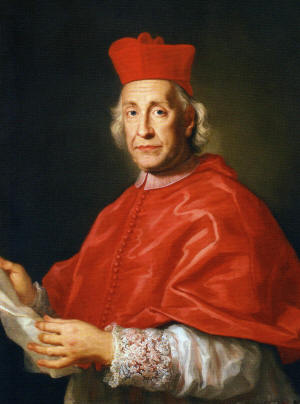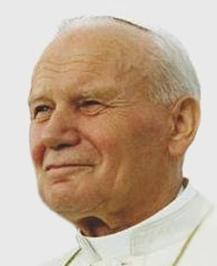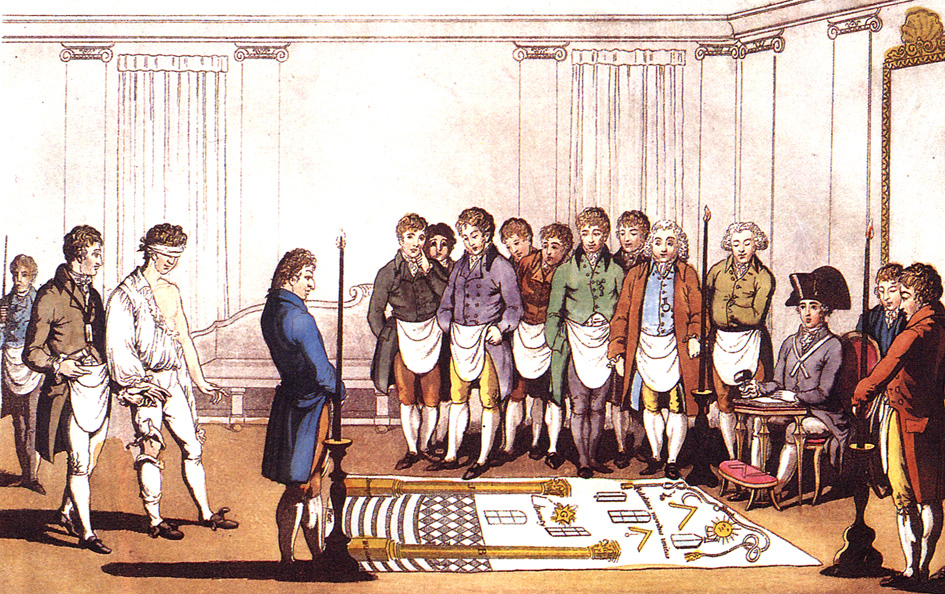|
Philipp Von Stosch
Baron Philipp von Stosch or Philippe de Stosch etc. (22 March 1691 – 7 November 1757) was a Kingdom of Prussia, Prussian antiquarian who lived in Rome and Florence. He is mainly remembered for his huge collection of engraved gems, now mostly in Berlin, and his large books on that subject. Life Stosch was born in Küstrin (today Kostrzyn in Poland) in the Neumark region of Margraviate of Brandenburg, Brandenburg. In 1709, with the blessings of his father, a successful artist who became Mayor (German: Bürgermeister) of Küstrin, Stosch began a tour of Holland, France, and England, which eventually led him to Italy. In Rome, a letter of introduction brought him into the circle of Pope Clement XI, a collector and connoisseur of antiquities. Soon he developed a close friendship with the cardinal-nephew, Alessandro Albani. Called home with the death of his elder brother in 1717, Stosch began a series of broader European journeys. Once again in Rome, Stosch became a dealer in ... [...More Info...] [...Related Items...] OR: [Wikipedia] [Google] [Baidu] |
Jacobitism
Jacobitism was a political ideology advocating the restoration of the senior line of the House of Stuart to the Monarchy of the United Kingdom, British throne. When James II of England chose exile after the November 1688 Glorious Revolution, the Parliament of England ruled he had "abandoned" the English throne, which was given to his Protestant daughter Mary II of England, and his nephew, her husband William III of England, William III. On the same basis, in April the Convention of Estates (1689), Scottish Convention awarded Mary and William the throne of Scotland. The Revolution created the principle of a contract between monarch and people, which if violated meant the monarch could be removed. A key tenet of Jacobitism was that kings were appointed by God, making the post-1688 regime illegitimate. However, it also functioned as an outlet for popular discontent, and thus was a complex mix of ideas, many opposed by the Stuarts themselves. Conflict between Charles Edward Stuar ... [...More Info...] [...Related Items...] OR: [Wikipedia] [Google] [Baidu] |
Johann Lorenz Natter
Johann Lorenz Natter (1705–1763) was a German gem-engraver and medallist. Life Lorenz was born 21 March 1705 at Biberach in Suabia. There he for six years was in business as a jeweller, and then worked for the same period in Switzerland, where he had relatives. At Berne he was taught by the seal-cutter Johann Rudolph Ochs. He then went to study in Italy, and at Venice took up gem-engraving. On coming to Rome Natter was, on his own account, employed by the Chevalier Odam to copy the Venus of Vettori, to make a Danae of it, and put the supposed engraver's name Aulus to it. For this engraved stone, as well as for others copied by him from the antique, Natter found purchasers. At Florence he was employed by Baron Philipp von Stosch. In 1741 or earlier, Natter came to England to work as a medallist and gem-engraver, bringing with him from Italy a collection of antique gems and sulphur casts. In 1743 he visited, in company with Martin Tuscher of Nuremberg, Denmark, Sweden, and ... [...More Info...] [...Related Items...] OR: [Wikipedia] [Google] [Baidu] |
Tommaso Crudeli
Tommaso Baldasarre Crudeli (December 21, 1702 – March 27, 1745) was a Florentine Freethought, free thinker who was imprisoned by the Roman Inquisition. He was a poet, lawyer, champion of free thought and is remembered as the first martyr of Universal Freemasonry. Biography Tommaso was born into a wealthy family from the Casentino (upper Arno), whose history dated back to the 12th century, albeit with several changes of name. The eponym is related to the story of the expulsion of Count Guidi from the castle of Poppi in 1440. Eventually, turning to Jacopo Crusca, leader of the revolt, he said "Vos quoque crudeles" and got the answer "in crudelitates fides". From this episode the family was appointed as "Crudeli" (meaning "cruels"). The Palazzo Crudeli (15th century) was the most important building after the castle and churches within the walls of Poppi, thanks to the economic strength of the family. The prosperity of the lineage is also understandable as all generations have gra ... [...More Info...] [...Related Items...] OR: [Wikipedia] [Google] [Baidu] |
Rosicrucian
Rosicrucianism () is a spirituality, spiritual and cultural movement that arose in early modern Europe in the early 17th century after the publication of several texts announcing to the world a new Western esotericism, esoteric order. Rosicrucianism is symbolized by the Rose Cross or Rosy Cross. There have been several Rosicrucian (or Rosicrucian-inspired) organizations since the initial movement was founded, including the Order of the Golden and Rosy Cross (1750s–1790s), the Societas Rosicruciana in Anglia (1865–present), and the Hermetic Order of the Golden Dawn (1887–1903). History Between 1610 and 1615, two anonymous manifestos appeared in Germany in the early modern period, early modern Germany and soon after were published throughout Early modern Europe, Europe. The Fama Fraternitatis, ''Fama Fraternitatis Rosae Crucis'' (The Fame of the Brotherhood of the Rosy Cross) was circulated in manuscript among German Occult, occultists since about 1610, and published at K ... [...More Info...] [...Related Items...] OR: [Wikipedia] [Google] [Baidu] |
Neri Maria Corsini
Neri Maria Corsini (19 May 1685 – 6 December 1770) was an Italian nobleman, a Catholic priest and cardinal and a leading patron of the arts. A scion from an old Florentine family, he began his career in the service of the Grand Dukes of Tuscany and spent much time at the European courts. After moving to Rome in In 1726, he lived with his uncle, Cardinal Lorenzo Corsini, who was elected Pope in 1730 and took the name Clement XII. His uncle appointed him as a cardinal. When the Pope became partially incapacitated, Neri Maria took on a key role in the papal reign of Clement XII. He dealt with the politics and diplomacy of the Holy See as well as in large building projects in Rome. He took measures to protect and improve the cultural heritage such as by opening the Capitoline Museums to the public in 1734.Papal conclave, 1740">conclave of 1740 at which Pope Benedict XIV was elected, by whom he was immediately named Archpriest of the Basilica of St. John Lateran (1740-1770). ... [...More Info...] [...Related Items...] OR: [Wikipedia] [Google] [Baidu] |
Pope Clement XII
Pope Clement XII (; ; 7 April 16526 February 1740), born Lorenzo Corsini, was head of the Catholic Church and ruler of the Papal States from 12 July 1730 to his death in February 1740. Clement presided over the growth of a surplus in the papal finances. He thus became known for building the new façade of the Basilica of Saint John Lateran, beginning construction of the Trevi Fountain, and the purchase of Cardinal Alessandro Albani's collection of antiquities for the papal gallery. In his 1738 bull , he provides the first public papal condemnation of Freemasonry. Early life Lorenzo Corsini was born in Florence in 1652 as the son of Bartolomeo Corsini, Marquis of Casigliano, and Elisabetta Strozzi, the sister of the Duke of Bagnuolo. Both of his parents belonged to the old Florentine nobility. He was a nephew of Cardinal Neri Corsini and was a distant relative of Saint Andrew Corsini. Corsini studied at the Jesuit Roman College in Rome and also at the University of Pi ... [...More Info...] [...Related Items...] OR: [Wikipedia] [Google] [Baidu] |
Catholicism And Freemasonry
The Catholic Church first prohibited Catholics from membership in Masonic organizations and other secret societies in 1738. Since then, at least eleven popes have made pronouncements about the incompatibility of Catholic doctrines and Freemasonry. From 1738 until 1983, Catholics who publicly associated with, or publicly supported, Masonic organizations were censured with automatic excommunication. Since 1983, the prohibition on membership exists in a different form. Although there was some confusion about membership following the 1962–1965 Second Vatican Council (Vatican II), the Church continues to prohibit membership in Freemasonry because it believes that Masonic principles and rituals are irreconcilable with Catholic doctrines. The current norm, the 1983 Congregation for the Doctrine of the Faith's (CDF) '' Declaration on Masonic associations'', states that "faithful who enroll in Masonic associations are in a state of grave sin and may not receive Holy Communion" and membe ... [...More Info...] [...Related Items...] OR: [Wikipedia] [Google] [Baidu] |
History Of Freemasonry
The history of Freemasonry encompasses the origins, evolution and defining events of the fraternal organisation known as Freemasonry. It covers three phases. Firstly, the emergence of organised lodges of operative masons during the Middle Ages, then the admission of lay members as "accepted" (a term reflecting the ceremonial "acception" process that made non-stone masons members of an operative lodge) or "speculative" masons, and finally the evolution of purely speculative lodges, and the emergence of Grand Lodges to govern them. The watershed in this process is generally taken to be the formation of the first Grand Lodge in London on the Gregorian 24 June 1717. The two difficulties facing historians are the paucity of written material, even down to the 19th century, and the misinformation generated by masons and non-masons alike from the earliest years. Freemasonry's long history includes its early development from organised bodies of operative stonemasons to the modern s ... [...More Info...] [...Related Items...] OR: [Wikipedia] [Google] [Baidu] |
Gian Gastone De' Medici
Gian Gastone de' Medici (born Giovanni Battista Gastone; 25 May 1671 – 9 July 1737) was the seventh and last Medicean grand duke of Tuscany. He was the second son of Grand Duke Cosimo III and Marguerite Louise d'Orléans. His sister, Electress Palatine Anna Maria Luisa, arranged his marriage to the wealthy and widowed Anna Maria Franziska of Saxe-Lauenburg in 1697. The couple despised each other and had no children. As Grand Prince Ferdinando, Gian Gastone's elder brother, predeceased Cosimo III, Gian Gastone succeeded his father in 1723. His reign was marked by the reversal of his predecessor's conservative policy; he abolished taxes for poorer people, repealed penal laws which restricted Jews and discontinued public executions. The Medici were wanting in male heirs; his father, Cosimo III, wanted the Electress Palatine to succeed Gian Gastone. However, Spain, Great Britain, Austria and the Dutch Republic disregarded Cosimo's plan and appointed Charles of Spain—whose ... [...More Info...] [...Related Items...] OR: [Wikipedia] [Google] [Baidu] |
Papal States
The Papal States ( ; ; ), officially the State of the Church, were a conglomeration of territories on the Italian peninsula under the direct sovereign rule of the pope from 756 to 1870. They were among the major states of Italy from the 8th century until the unification of Italy, which took place between 1859 and 1870, culminated in their demise. The state was legally established in the 8th century when Pepin the Short, king of the Franks, gave Pope Stephen II, as a temporal sovereign, lands formerly held by Arian Christian Lombards, adding them to lands and other real estate formerly acquired and held by the bishops of Rome as landlords from the time of Constantine onward. This donation came about as part of a process whereby the popes began to turn away from the Byzantine emperors as their foremost temporal guardians for reasons such as increased imperial taxes, disagreement with respect to iconoclasm, and failure of the emperors, or their exarchs in Italy, to pro ... [...More Info...] [...Related Items...] OR: [Wikipedia] [Google] [Baidu] |






